Article written by Daffa Konaté, founder of Art Kelen.
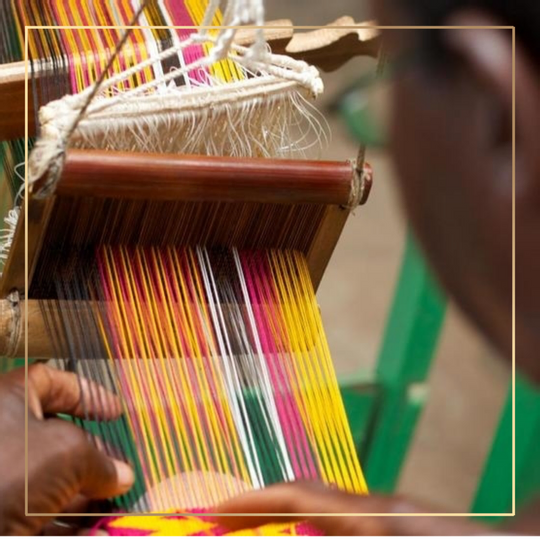
The Kente (or Kita in Ivory Coast) is a colored loincloth, cotton or silk woven, composed of strips which are sewn together. This handmade fabric was once woven by men and worn by the Ashanti people of Ghana. Kente comes from the word ”kenten”, which means ”basket” in the Ashanti dialect because its production is similar to that of the basket.
Origin of Kente, source of the legend
The origins get back to the 12th century. According to the most famous legend, two brothers who went hunting saw a spider called “Anansi” (found in all traditional Ghanaian tales) spin its thread. Amazed by the beauty of the work, they decided to use the same process with threads of raffia (a type of swampy palm trees). The fabric made was offered to the king who was seduced by the splendor of the loincloth. He decided to raise the brothers to the rank of royalty. They then became the King’s appointed weavers.
The cloth was worn exclusively by kings, queens, and important figures of the Ghanaian state during ceremonies and on special occasions. In 1896, when the Ashanti king is dethroned by the British colonists and exiled to the Seychelles, wearing the cloth became more popular.
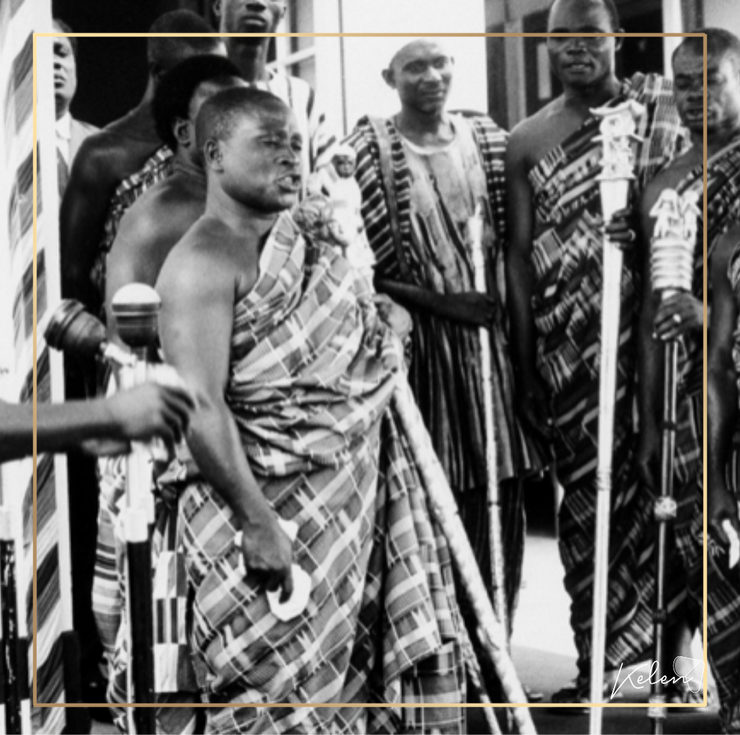
The cultural values of the Kente
The Kente is used for the strong moments of life and carries messages. The cultural value of Kente is reflected in the meaning of the colors, shapes and patterns.
The colors
Originally, the fabrics are essentially black and white but with the arrival of dyes imported from abroad the Kente became more colorful:
Yellow: symbolizes wealth, the generosity of the earth, the opulence of the sun
Green: expresses life, nature, prudence and good health
Blue: means wisdom, patience, humility, heaven and earth
White: symbol of purity, innocence, spirituality and peace
Black: symbol of occultism, hidden knowledge, mourning, mystery and darkness
Red: political and spiritual symbol, bloodshed, sacrificial rites and death
Brown: color of the “mother earth”, associated with healing
Purple: Symbol of femininity
Silver: Color of the moon, it symbolizes serenity, purity and joy.
The patterns
There are 5 shapes: the square, the triangle, the diamond, the circle and the cross.
Square: symbol of the earth and the cosmos; it is associated with femininity, because the woman, beyond her life (birth-existence-death-elevation) gives the life (creation-procreation). This figure is very present in the Kente and remind us that the Akan society is matrilineal.
Triangle: with its three sides it represents life but also the family.
Circle: it represents the infinite. This figure of divine essence is found in almost all the Kente cloths worn during the enthronement of a king in order to remind the people of his divinity.
Cross: it refers to the movement of the water and the fire but mostly to the four cardinal points
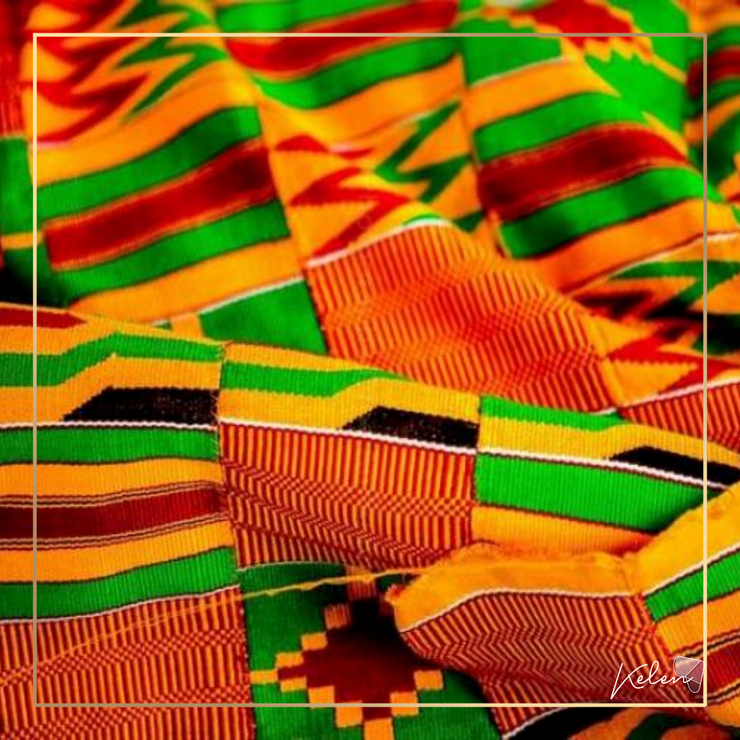
The Kente today
Diamond: sign of the existential duality of the monarch (or the chief). His existence as a human being is represented by a triangle (the upper one) and his existence as a chief by another one (lower triangle). This means that the destiny of the man and the chief are linked.
The Kente symbolizes solidarity with an African heritage. Very recently, and in a controversial way, a group of US senators wore a Kente cloth while kneeling for nine minutes in memory of George Floyd.
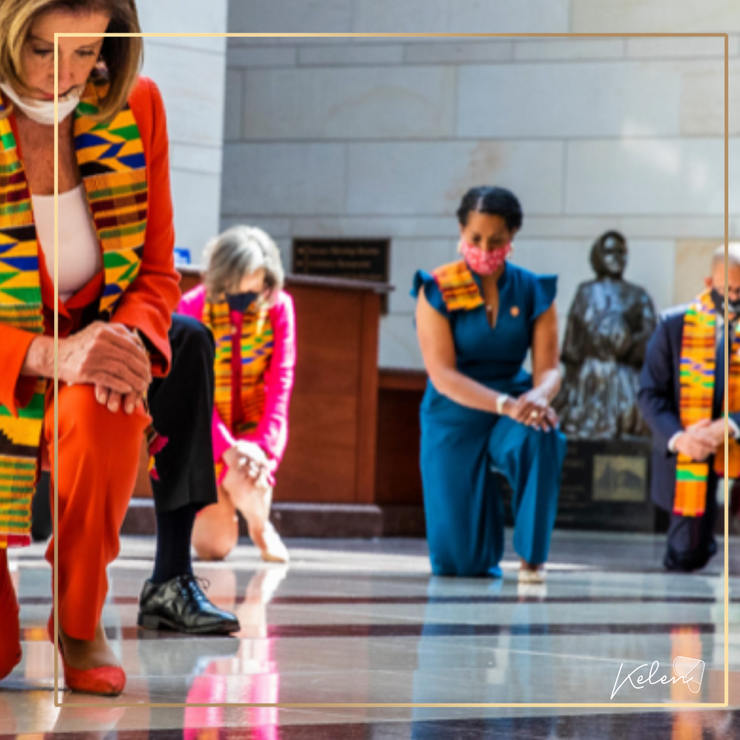
On the fashion side, many designers, such as Imane Ayissi from Cameroon, who has made a place for himself in the closed world of Haute Couture, uses the Kente in his creations. These contemporary designers promote the use of “traditional” African fabrics manufactured by craftsmen.
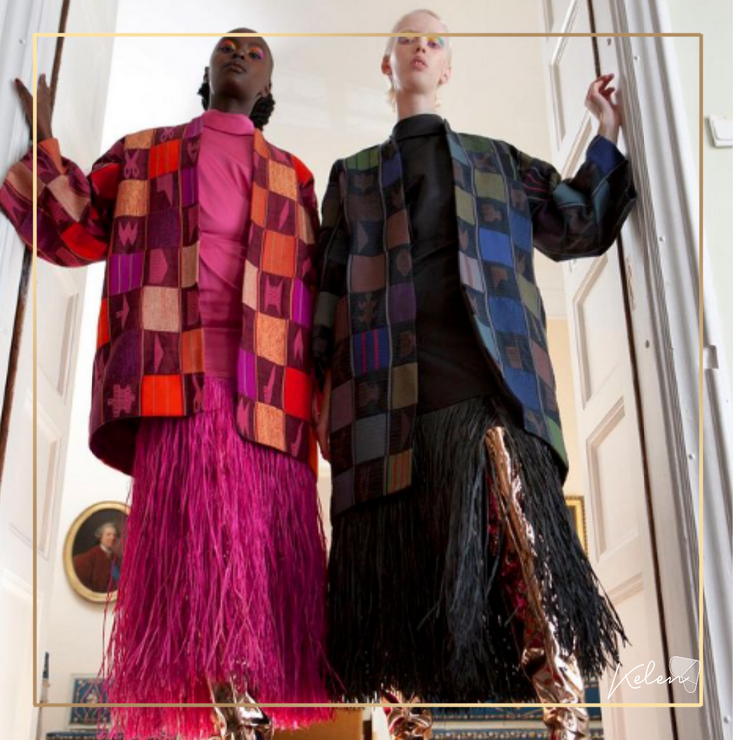
Through his brand “Kente Gentlemen”, Aristide Loua wishes to bring to present, value, celebrate and promote the African heritage and its socio-cultural identities through fashion, aesthetics, lifestyle, photography and other visual arts.
Want to buy some African Fabric?
Head to our online shop: https://www.lacotonnerie.com/collections/ethnic-fabrics and if you are looking for African home decor, click here: https://www.lacotonnerie.com/collections/bogolan-cushion-cover-africa
Daffa Konaté is the founder of Art Kelen which promote the African culture through art. If you want to discover more about her work and the artists she supports or buy African art pieces, don’t hesitate to have a look at her website. www.art-kelen.com. You can also follow her on Instagram: @art_kelen






